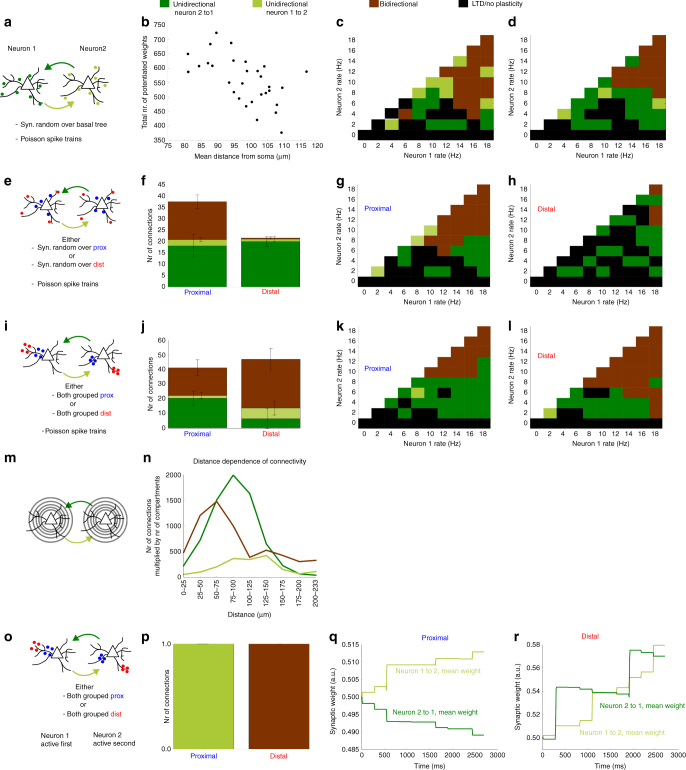Fig. 3.
Predicted connectivity along dendrites. a Two neurons are mutually connected: the synapses are randomly distributed across the basal dendrites and both neurons are activated by generating Poisson spike trains and injecting a brief external current into the somatic compartments at the relevant spike times. b The mean distance of the synapses to the soma is negatively correlated to the number of strengthened synapses (Pearson’s r = −0.569, p < 2e−3). c, d Two examples of the final connectivity. Colour codes can be found at the legend on top of the figure. e Same as panel a, but the synapses are now constraint to either proximal or distal compartments. f More synapses are strengthened when targeting proximal regions compared to when targeting distal regions. The stacked bars show the means over five simulations (error bars indicate one s.d.). g, h Examples of final connectivity for the proximally distributed case g and the distally distributed case h. i Analogous to panel e, but synapses are clustered onto one proximal or distal compartment. j Analogous to panel f, but synapses are now clustered onto one proximal or distal compartment. By comparing with f, proximal synapses are less influenced by the clustering than distal synapses. The stacked bars show the means over five simulations (error bars indicate one s.d.). k, l Examples of the final connectivity for the proximally clustered case k and the distally clustered case l. m We divide our basal dendritic tree in nine regions depending on the distance from the soma. For each distance range, synapses are either randomly distributed among the relevant compartments, or clustered on one of the compartments. n The mean results of connectivities for the distributed and the clustered simulations in each distance range are summed. The values are multiplied by the number of compartments in the respective distance range. o Neuron 1 is always activated before neuron 2. The synapses are clustered either proximally or distally. p In the proximal case, all simulations result in unidirectional connections from neuron 1 to neuron 2. In the distal case, only bidirectional connections are observed. q, r Examples of the evolution of the mean synaptic weights during the simulation in the proximal case q and the distal case r

